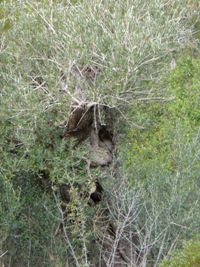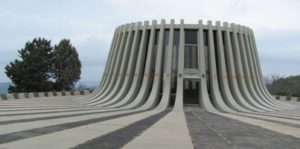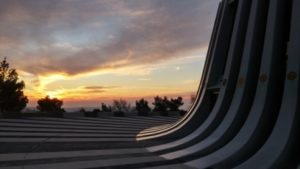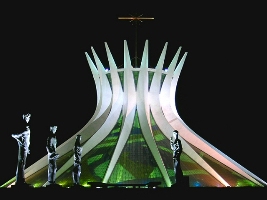The Parasha of Shoftim deals with a variety of issues. Rules for the conducting of a king, the theory of law and justice and a broken necked heifer are only examples for some of the subjects. I decided to refer to only two verses:
“When you lay siege to a city for a long time, fighting against it in order to capture it, you must not destroy its trees by putting an ax to them, because you can get food from them,. You must not cut them down. Are trees of the field human, to come under siege by you? But you may destroy the trees that you know do not produce food. You may cut them down to build siege works against the city that is waging war with you, until it falls”. (Deuteronomy, 20:19-20)These verses are used during Tu-Bishvat (the 15th of the Hebrew month of Shvat) and in other events in order to point out the affinity between a human and the tree of the field. A good illustration for this idea is given by Nathan Zach’s Poem:
“Because the man is the tree of the field;Like the tree the man grows up.Like the man, the tree also gets uprooted,
And I surely do not know
where I have been and where I will be,
like the tree of the field…”
The first line of the poem represents another possibility for the English translation of the verse “Are trees of the field human “, hence an interesting double meaning. The view expressed in the poem is very common these days. It is a kind of an ecologic point of view that humanizes the tree of the field and ties its fate with the fate and course of life of man. It is interesting to mention here that the more traditional interpretation including the English translation of the bible understands these verses in a completely different way. Rashi thinks that the expression “Because the man is the tree of the field;” is actually a rhetorical question – Are trees of the field human? Definitely not! Trees can’t hide behind fortified walls so why should we vandalize them? Eben-Ezra understands the human life depend on the trees. People eat the fruit of trees and shouldn’t damage them. Rashbam understands the verses as forbidding the uprooting of trees far from the city under siege but enabling warriors to cut down the flora if it serves as cover to the enemy.
Alongside the words of the distinguished interpreters, we find that in modern Israeli way of thinking there is a special place for the direct analogy between human and tree. An interesting example can be found on mount Aminadav nearby Jerusalem, where on 1966, the Kennedy memorial was built.
John F. Kennedy, the 35th president of the United States is remembered in Israel mostly because of the Cuban missile crisis. Theoretically there was no special connection between J.F. Kennedy and the state of Israel. Well, he did meet Ben-Gurion and Golda Meir but you can’t say he was particularly friendly towards Israel. Considering this it might come as a surprise that the decision on building a memorial for Kennedy in Jerusalem was made on the same day he was killed. The man who suggested it was Menachem (Max) Bresller, head of the USA branch of the Jewish national fund. Bresller has done much for the state of Israel in fund raising and the Jerusalem neighborhood nearby is named after him “Kiryat Menachem”.
The Kennedy memorial was built by architect David Resnick. It is shaped as a pruned trunk of an oak tree as if saying “… the man is the tree of the field”. Kennedy’s life and premature death were compared to the severed trunk of a tree typical to the Israeli forest. The memorial is built with 51 concrete pillars with the 50 emblems of American states and the one of Colombia district. Inside there is a place representing eternal flame and a relief on Kennedy’s face, identical to the one set on Kennedy’s tomb in Arlington, Virginia.
David Resnick was born in Brazil and started his professional life over there. He was greatly influenced by his master, the famous architect Oscar Niemeyer who built the Cathedral of Brasilia. Resnick’s Kennedy memorial is deeply influenced by the cathedral.
You can find a quite a few of Resnick’s buildings in Jerusalem: The Giv’at Ram Synagogue, The Yad Labanim (a memorial for soldiers) and the Education faculty in the Hebrew university on mount Scopus.
The Kennedy memorial, known as Yad Kennedy, was inaugurated on the 4th of July 1966 and since then it has become a symbol of the deep connection between the USA and the state of Israel. Many ceremonies take place in this wonderful spot, where the pruned trunk memorial lays among the trees of “Forest of peace”, symbolizing the strong affinity between mankind and world, mankind and the tree of the field.



